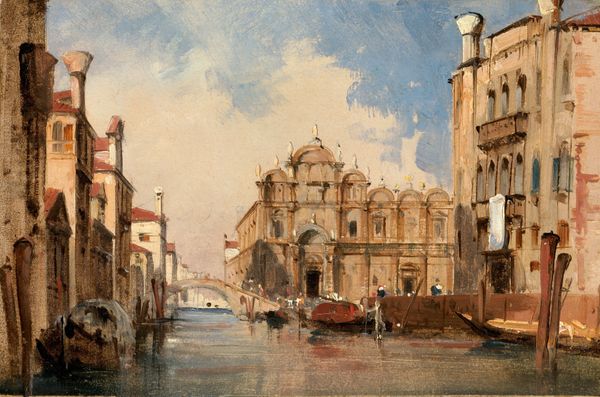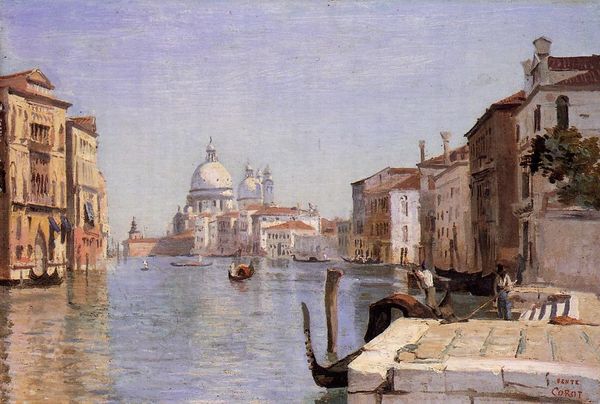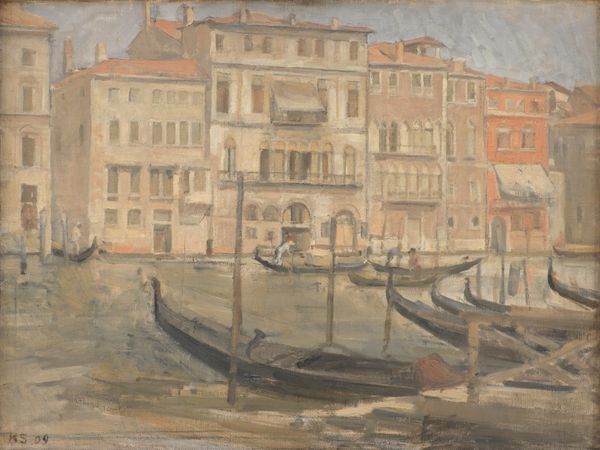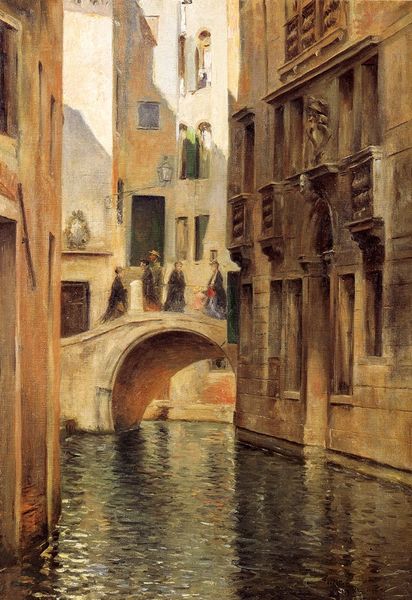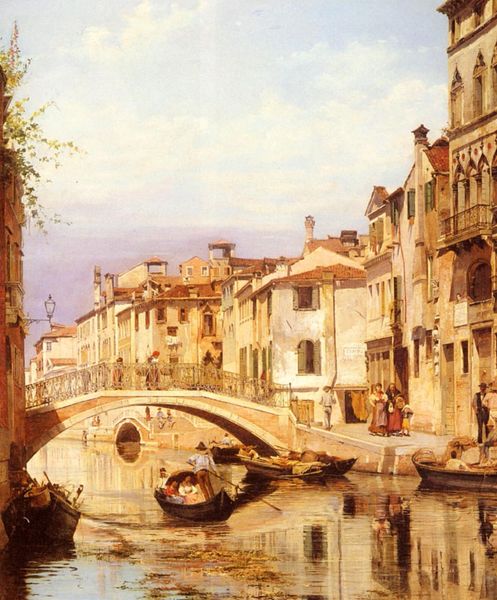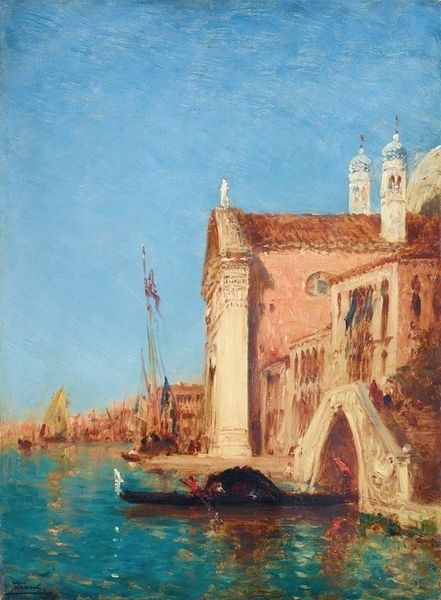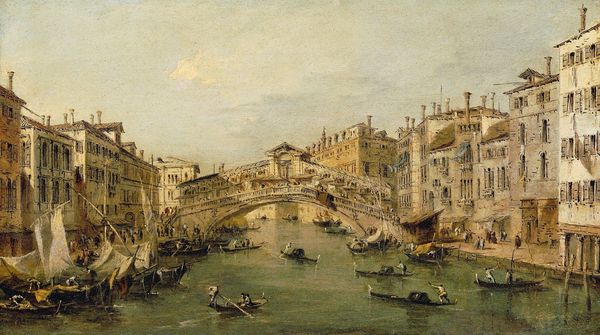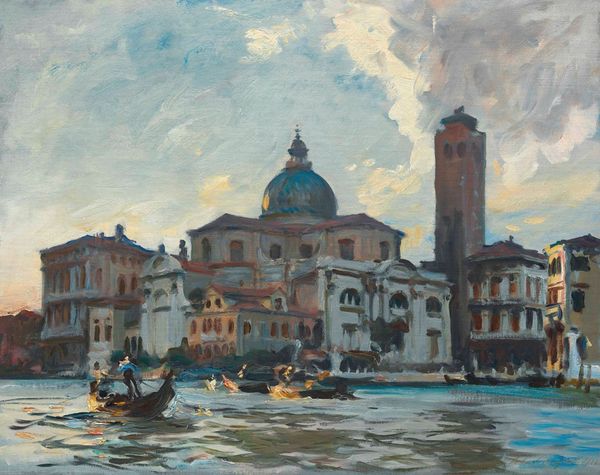
Dimensions: overall: 15.5 x 23.5 cm (6 1/8 x 9 1/4 in.) framed: 32.5 x 40.6 x 5.1 cm (12 13/16 x 16 x 2 in.)
Copyright: National Gallery of Art: CC0 1.0
Curator: Standing before us is a canvas capturing the Church of San Trovaso in Venice, painted around 1830. It's a compelling example of Venetian painting, rendered in oil paint. Editor: It's immediately striking how the light catches the buildings. They almost seem to float on the water, but there is a lack of the gritty working waterfront, do you know something about that? Curator: Well, it evokes the Romantic period, a trend celebrating nature and emotion. This cityscape reduces evidence of social realities. Its rendering, possibly en plein air, presents an idealized, picturesque view that omits work being done on the ground. Editor: Plein air... the very act of painting outdoors invites consideration of materials! How did artists transport and prepare their canvases back then? The materiality of that portable studio seems critical. And what dyes would achieve those colors of terra cotta roofs against the bright blues of the canal? Curator: Good point. And it does underscore the shifting patronage of art during that era. Landscape art in this mode shifted away from purely aristocratic settings. The market for picturesque views grew. Editor: You know, even the brushstrokes contribute! They are visibly loose and create a sense of immediacy. And in terms of the process of the production, consider how much quicker those works were. This painting offers insight into how it's made. I notice there isn't much fine detail. Curator: Right. That also indicates evolving taste and audience. Think of how Venice was perceived by those encountering it through art: as this dreamy, historic center. A very different context from the city’s industrial roles at the time. This kind of representation has lasting effects on the place Venice occupies in the collective imagination. Editor: That’s such a clever approach to seeing the art, by questioning labor and material processes of artmaking as being key in the definition of Venice. We can appreciate how labor shaped that culture, too. Curator: Exactly. Both viewpoints offer different insights into the cultural importance this art holds. Editor: Indeed. It really gives me an alternative point of view on landscape paintings!
Comments
No comments
Be the first to comment and join the conversation on the ultimate creative platform.
